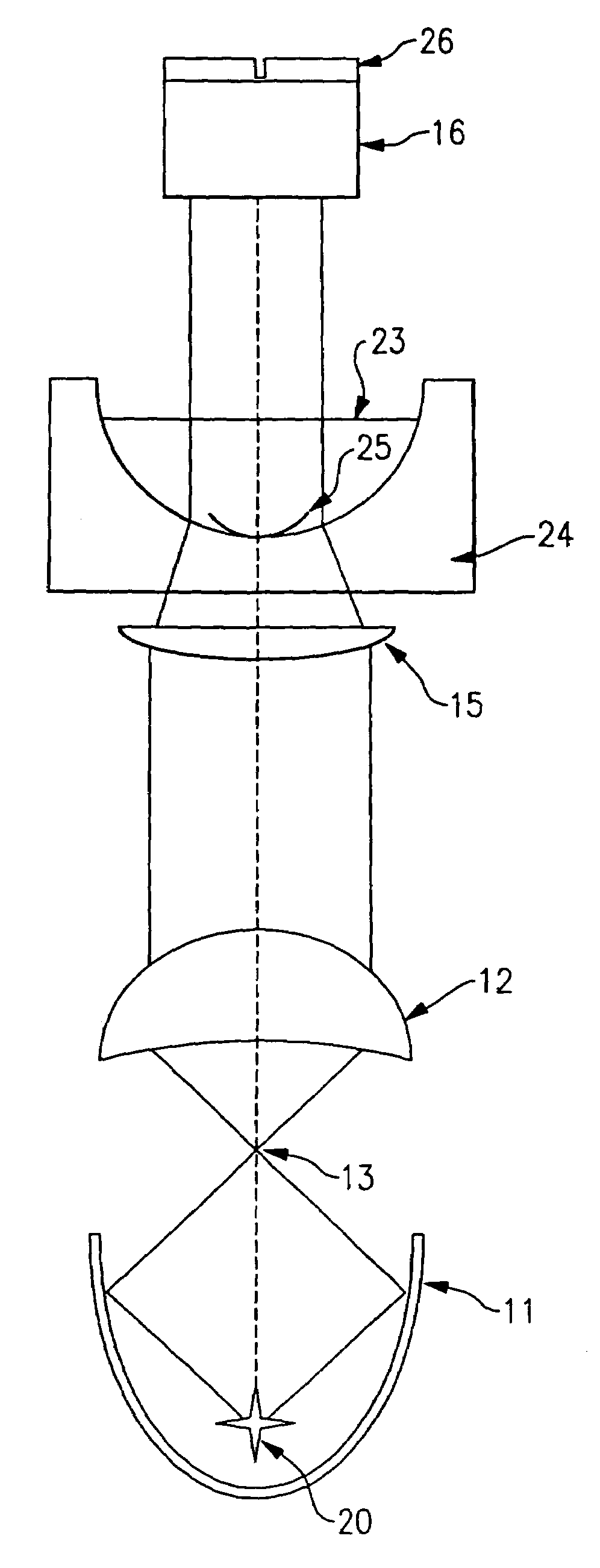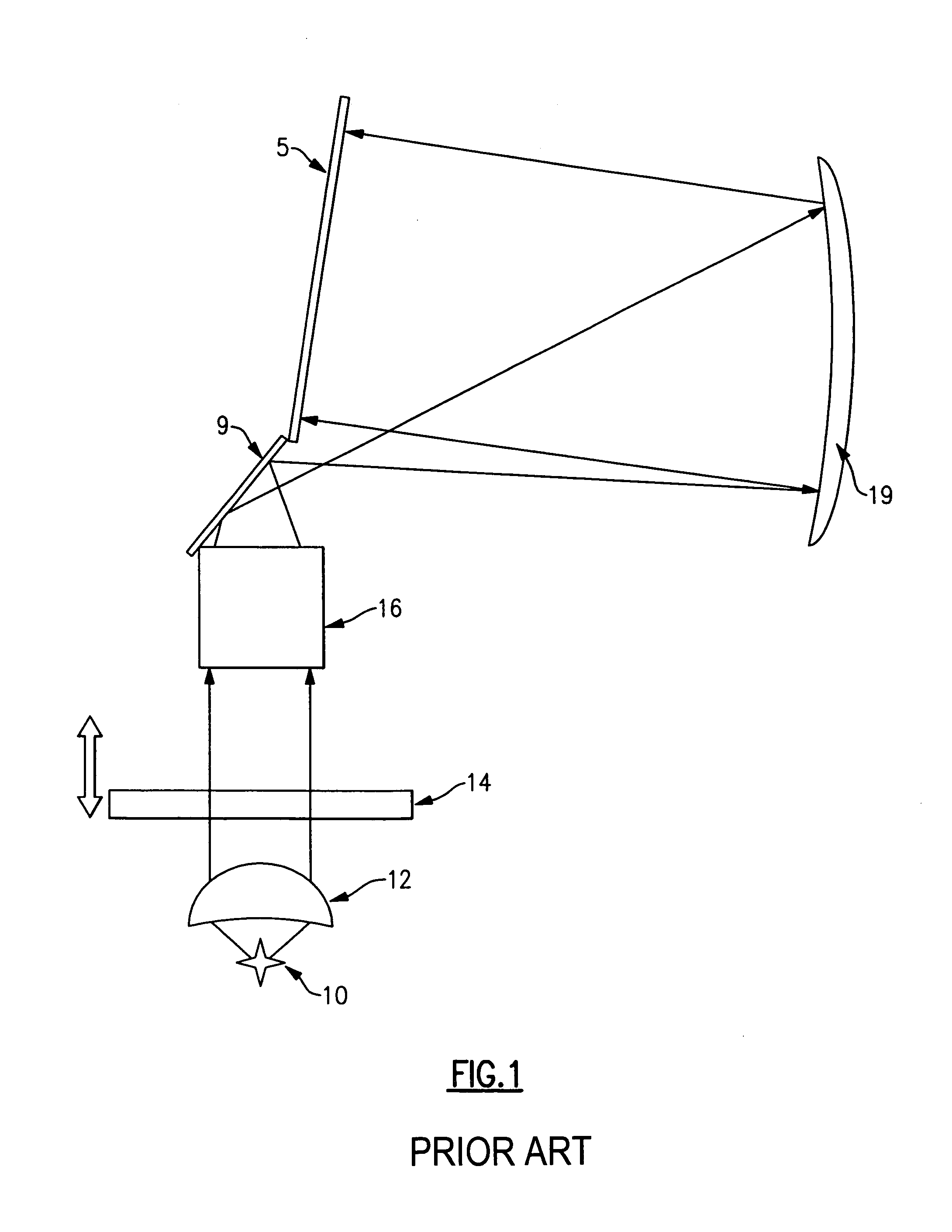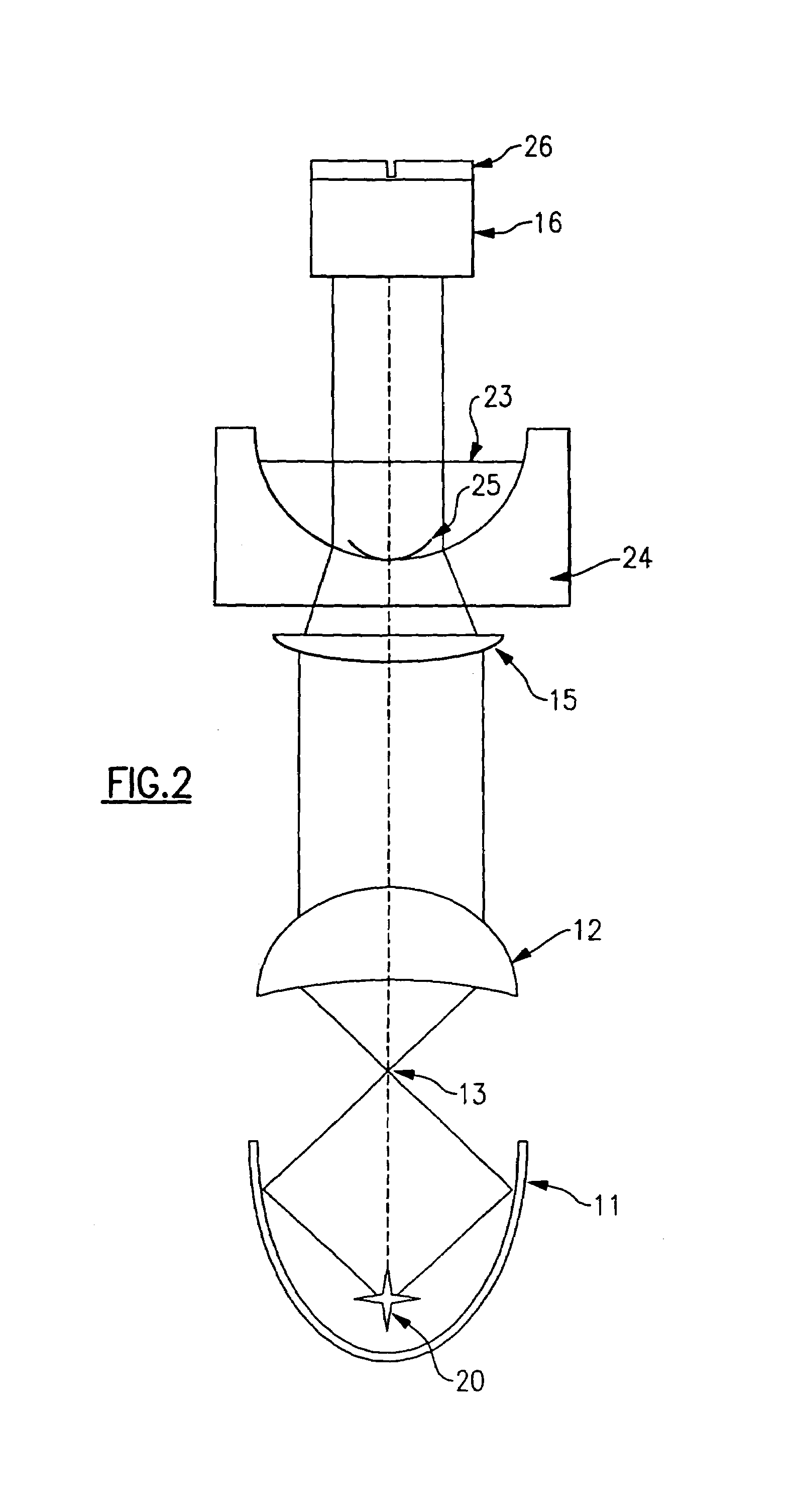Depth of field enhancement for optical comparator
a technology of depth of field and optical comparator, which is applied in the direction of measurement devices, instruments, structural/machine measurement, etc., can solve the problems of difficult to measure three-dimensional objects that need more than one surface in focus at the same time, increase in depth of field, etc., to reduce confusion circle, increase the depth of field, increase the effect of field
- Summary
- Abstract
- Description
- Claims
- Application Information
AI Technical Summary
Benefits of technology
Problems solved by technology
Method used
Image
Examples
Embodiment Construction
[0012]The purpose of the invention is to acquire an image of the entire contact lens at once. This enables detection of scratches on virtually any portion of the lens. Scratches on the edges or scratches in the middle can be detected in a single step. The invention allows for inspection of the entire contact lens at one time, simultaneously looking for scratches and other defects that exist on either surface or any edge. The preferred embodiment of the invention projects an image magnified ten times on a display screen.
[0013]The lack of a depth of field in a prior art two-dimensional inspection device makes it difficult to measure three-dimensional objects that require more than one surface to be inspected. It is, therefore, highly desirable to have the entire object in focus the same time. This invention addresses the problem by increasing the depth of field by a significant amount.
[0014]Referring to FIG. 2, the present invention simultaneously focuses on the entire contact lens by...
PUM
 Login to View More
Login to View More Abstract
Description
Claims
Application Information
 Login to View More
Login to View More - R&D
- Intellectual Property
- Life Sciences
- Materials
- Tech Scout
- Unparalleled Data Quality
- Higher Quality Content
- 60% Fewer Hallucinations
Browse by: Latest US Patents, China's latest patents, Technical Efficacy Thesaurus, Application Domain, Technology Topic, Popular Technical Reports.
© 2025 PatSnap. All rights reserved.Legal|Privacy policy|Modern Slavery Act Transparency Statement|Sitemap|About US| Contact US: help@patsnap.com



